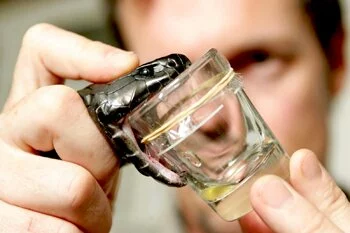What is psychotherapy
Psychotherapy is a way to treat people with a psychological problem or disease by helping them understand their illness. It teaches people strategies or methods and gives them tools to deal with stress and unhealthy thoughts and behaviours. Psychotherapy alone may be used to treat a person depending on their illness and its severity, for any psychological problem or It can also be combined with medications. Psychotherapists work with an individual or families to devise an appropriate treatment plan and the duration of treatment, based on individual requirement.
Types of psychotherapy
Many kinds of psychotherapy exist. some therapies have been scientifically tested more than others. Some people may have a treatment plan that includes only one type of psychotherapy. Others receive treatment that includes elements of several different types. The kind of psychotherapy a person receives depends on his or her needs.
Cognitive Behavioral Therapy
CBT is based on the idea that we can make permanent changes in the way we behave by shifting our negative patterns of thinking. It is short-term and goal-oriented. The therapist and patient work together to identify the behaviors the patient wants to change and then come up with an action plan to do so.
Cognitive behavior therapy is generally short-term and focused on helping clients deal with a very specific problem. During the course of treatment, people learn how to identify and change destructive or disturbing thought patterns that have a negative influence on behaviour.
People often experience thoughts or feelings that reinforce or compound faulty beliefs. Such beliefs can result in problematic behaviors that can affect numerous life areas, including family, romantic relationships, work, and academics. Due to the negative thinking patterns, the individual might start avoiding social situations or pass up opportunities for advancement at work or at school. In order to combat destructive thoughts and behaviors, a cognitive-behavioral therapist begins by helping the client to identify the problematic beliefs. Because it is important for learning how thoughts, feelings, and situations can contribute to maladaptive behaviors.
The cognitive behavior therapy focuses on the actual behaviors that are contributing to the problem. The client begins to learn and practice new skills that can then be put into use in real-world situations.
CBT is a gradual process that helps a person take incremental steps towards a behavior change
CBT has been used to treat people suffering from a wide range of disorders, including anxiety, phobias, depression, and addiction.
CBT is one of the most researched types of therapy, in part because treatment is focused on highly specific goals and results.
CBT is often best-suited for clients who are comfortable with introspection. Such self-analysis can be difficult, but it is a great way to learn more about how internal states impact outward behavior.
CBT is also well-suited for people looking for a short-term treatment option that does not wish to take medication. One of the greatest benefits of cognitive-behavior therapy is that it helps clients develop coping skills that can be useful both now and in the future.
Dialectical Behavior Therapy
Dialectical behavior therapy (DBT), is used to treat people with suicidal thoughts and actions. DBT emphasizes the value of a strong and equal relationship between patient and therapist
In DBT,the therapist assures the patient that the patient’s behavior and feelings are valid and understandable. At the same time, the therapist coaches the patient to understand that it is his or her personal responsibility to change unhealthy or disruptive behavior.
The therapist consistently reminds the patient when his or her behavior is unhealthy or disruptive and also teaches the skills needed to better deal with future similar situations. DBT involves both individual and group therapy. Individual sessions are used to teach new skills, while group sessions provide the opportunity to practice these skills.
Interpersonal Therapy:
Interpersonal therapy (IPT) is most often used on a one-on-one basis to treat depression. IPT helps in,
- Improving communication patterns and the ways people relate to others.
- Helps identify how a person interacts with other people.
- Guides the person to change those behaviours which causes problem.
- Explores major issues such as grief, transition period or certain environmental reasons.
- Helps the patient learn to express appropriate emotions in a healthy way.
- In combination with social rhythm therapy it helps to treat bipolar disorder
Psychodynamic therapy: Psychodynamic therapy asserts that a person’s behavior is affected by his or her unconscious mind and past experiences. Psychodynamic therapy helps people gain greater self-awareness and understanding about their own actions. It helps patients identify and explore how their non-conscious emotions and motivations can influence their behavior. Sometimes ideas from psychodynamic therapy are interwoven with other types of therapy, like CBT or IPT, to treat various types of mental disorders.
Expressive or creative arts therapy: Expressive or creative arts therapy is based on the idea that people can help heal themselves through art, music, dance, writing, or other expressive acts. It also helps college students at risk for depression.
Play therapy: This therapy is used with children. It involves the use of toys and games to help a child identify and talk about his or her feelings, as well as establish communication with a therapist. A therapist can sometimes better understand a child’s problems by watching or listening to parents about how he or she plays.


